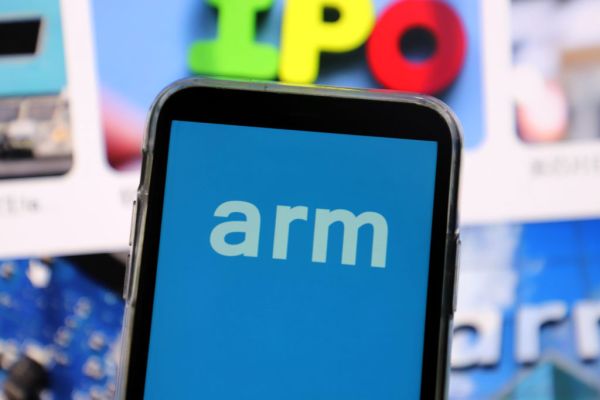The biggest story in tech today is that Arm, the British chip designer, has set an initial IPO price range of $47 to $51 per share. While the company will not be the only tech IPO of note that we see this year, it will likely be the largest in terms of dollars raised and its valuation.
The pricing is important given the potential IPO’s size, and one could argue it’s even more important for Arm’s owner SoftBank, which has had to report an uneven set of results to its own shareholders.
Regardless, Arm appears set to prove a big winner for the Japanese conglomerate, which bought the chip designer in 2016 for £24 billion in cash. The investment firm then sought to sell Arm for $40 billion to Nvidia, but that deal fell through due to regulatory concerns.
Now SoftBank is looking to take Arm public at a valuation of about $50.8 billion, provided the IPO launches at the middle of the price range, and around $52 billion if it prices at the upper end — quite a nice markup.
Still, with SoftBank valuing Arm at $64 billion in its own accounting, it probably wants a better price for the company. Big semiconductor companies are rare gems in both business and geopolitical circles, so it’s not hard to understand why SoftBank has high hopes for this IPO.
The question, then, is whether Arm is worth $52 billion or more. Of course, every company is worth what folks will pay for it, but Arm’s comparables can help us decide what’s the right price for this semiconductor designer.
Is the price right?
Arm has been on the market twice since 2016, so we have some useful historical marks for the company. We already know that its value has gone up in recent years in the eyes of both its owner and potential acquirers.
We need some comparable businesses, though, to arrive at a good price tag. Intel is an obvious candidate, but since it is both a chip designer and a chip fabricator, it’s not perfect because Arm designs chips but doesn’t manufacture them.
The same is true of TSMC, but the other way around: It doesn’t design chips but it does manufacture them. So you could say it’s the inverse of Arm, in a way.
Where does that leave us? With questions and only partial answers:
- What is Arm’s effective revenue multiple at a $51 billion valuation? The company would be worth 19x its revenue of $2.68 billion for the 12 months ended March 31, 2023. Annualizing the revenue from the three months ended June 30, 2023, gives the company a multiple of 18.9x.
- What is Arm’s effective profit multiple at a $51 billion valuation? Arm provides three main profit metrics in its F-1 filing: operating income, adjusted operating income and net income. The company reported adjusted operating income of $783 million in the year ended March 31, so we can affix a roughly 65x multiple on the company’s valuation if it prices at the middle of the price range. That multiple falls to 47.9x if we annualize its most recent quarter’s adjusted operating income and use that as our figure for profit. In short, Arm is an expensive stock.
- How do those stack up compared to its very imperfect comps? Intel has a price-sales multiple (trailing) of 2.9x. It does, however, have a forward price-earnings ratio of 61x, per YCharts data, which is closer to where Arm is heading. TSMC has a price-sales ratio of 6.8x and a price-earnings ratio of 15.7x — it looks far cheaper.
I presume you were shouting at the screen after that last bullet that the math is silly if we are not adjusting comparable-ish figures for comparable growth rates and the like. I agree!
But we have a problem: Arm’s revenue declined to $2.68 billion in its last full year from $2.70 billion a year ago, and it did so again in its most recent quarter. So if we were going to really compare it with Intel and TSMC, how well are they doing?
Not that well! Intel’s revenue shrank 15% in its most recent quarter, while TSMC’s revenue was off 13.7%. From that perspective, Arm’s revenue declines are actually pretty modest — it appears to be taking less stick from the current chip down-market than some of its counterparts.
Yes, the comps are imperfect, but Arm’s financials look pretty healthy when compared to a design and fab combo as well as a fab-focused company. So it should, by that measure, wrangle a price-sales and price-earnings premium to Intel and TSMC, right? Yes, presuming that we are not missing something huge in our calculations.
That helps us arrive at the expectation that Arm might manage stronger price-sales and price-earnings ratios than others in the space. Sadly, it does little to help us understand by how much. Frankly, given the prima-facie extreme multiples we are anticipating, I would say, “Probably not more than what it has right now,” unless I was in the bull camp for semiconductors.
The simple fact is that chip demand is not expected to decline over time; it is expected to rise. More chips mean more royalties for Arm, and more revenue for Intel and TSMC, of course. I hazard that investors will care less about trailing results at Arm as much as its growth prospects.
From that perspective, $51 billion feels a tad low.
More when (if?) Arm raises its price range or decides upon one.
